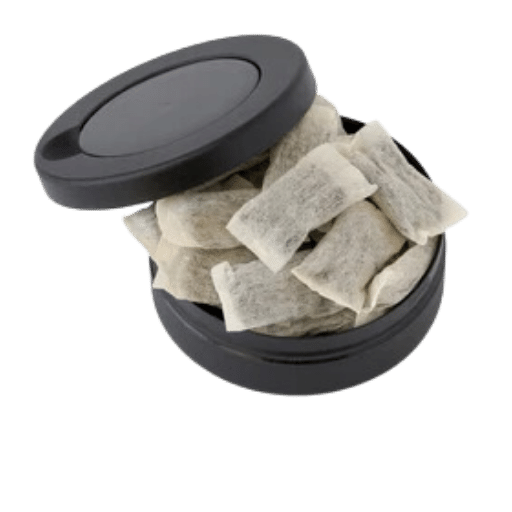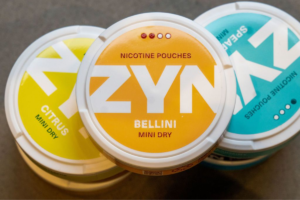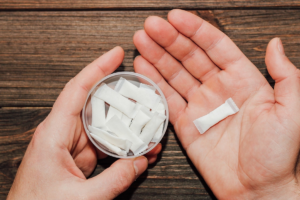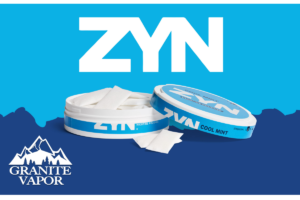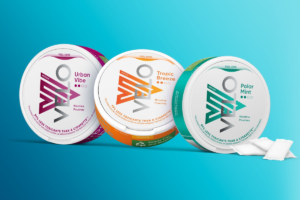Primarily used as a substitute for smoking cigarettes, snus is a tobacco product from Sweden. Unlike traditional methods of smoking, snus is taken by putting it between the upper lip and gum so that nicotine can be absorbed through the mouth’s mucous membranes. This method bypasses combustion hence no smoke is inhaled making snus fall under smokeless tobacco category. In historical perspective, people have been drawn to snus because of its ability to deliver nicotine thus satisfying cravings and providing stimulation without necessarily having to smoke. The usage of snus cuts across cultural norms within Scandinavian nations as well as harm reduction approaches among those who want to quit or lower their cigarette consumption
What is snus and how is it used?
Comprehending Smokeless Tobacco and Swedish Snus
The products of smokeless tobacco are those which involve the use of tobacco without burning the leaves. They release nicotine by absorption through mouth tissues or less commonly nasal passage as opposed to cigarettes or cigars. One common type in Scandinavia is called Swedish snus. It is made by grinding fine powder from moistening wrapped packages around grounded dried tobacco leaves mixed with other ingredients like salt, sodium carbonate etc., before being packed tightly together so that no air can get into them during storage which prevents mold growth but also allows flavor development over time due to ageing processes taking place within these packets.
Traditional Use Of Moist Oral Snuff In Scandinavia
Moist oral snuff, known as snus in Scandinavia has a long history there. It has been a cultural practice for many centuries and continues up until today. The old way was to put wet ground tobacco below upper lip; this method could be used instead of smoking when drinking heavily among others because it would keep hands free but still give satisfaction sought after from using any form nicotine replacement therapy (NRT). This provides an interesting insight into how deeply ingrained traditional practices associated with smokeless tobacco use are throughout different parts of society even though they may seem strange at first glance based on one’s own culture or values.
Types Of Snus: Portion Vs Loose
Snus can be found packaged in two different ways:
- Portion: These come prepackaged small pouches that resemble tea bags which users place under their upper lips making it easy clean option since everything stays contained within the packet itself rather than spitting out loose bits everywhere else as happens with other types chewable tobaccos such as dip or chaw where one must spit frequently throughout day along sidewalks etc… Flavor release is controlled because each sachet contains same amount nicotine ratio so people who prefer convenience will most likely choose this particular form over others due its predictability
- Loose:Unlike portion snus, loose snus is a moist powder not contained by any packaging. To use it, one must take some of the powder and pack into a “pillar” which can be placed under their upper lip. This form offers more control over strength and size of dose; however, loose snus requires additional manual handling compared to portioned ones making them less convenient especially when on go.
Both forms allow individuals to satisfy their nicotine cravings without having to smoke cigarettes or use other forms of tobacco that require spitting which reflects cultural preferences for such products among Scandinavians but also people from around world.
How does the nicotine content in snus compare to other tobacco products?
Comparing Nicotine Levels in Snus and Cigarettes
Nicotine content in snus may vary greatly between brands and types, usually containing between 8mg to 24mg of nicotine per gram of snus. Conversely, an average cigarette administers about 1mg of nicotine into the smoker’s system. Although method varies—smoke inhalation for cigarettes versus mucosal absorption for snus—the bioavailability (the proportion entering circulation) of nicotine can impact user experience as well as potential dependence.
Impact of Nicotine from Smokeless Tobacco Use
The mode of delivery should be taken into account when assessing the effect of nicotine from smokeless tobacco like snus. Unlike cigarettes, which give a rapid rush followed by quick drop off, snuses provide longer lasting but less intense experience with nicotine because it is delivered slower over time. Thereby individual preferences might be influenced by this distinction as well as addiction potential decreased according to gradual delivery through oral mucosa that allows for sustained release and avoids “peak and trough” effects typical for smoking.
Snus Contains Nicotine: What It Means For Users
For users, having nicotine in snus brings some implications:
- Addiction Potential: Nicotine is highly addictive regardless of how it gets into the body. Those who use snus can become addicted just like smokers do.
- Health Risks: Although not smoked, there are still health risks associated with using snuff such as its effect on cardiovascular system and possible oral problems locally.
- Cessation Tool: Some people suggest using chew packs as a way to quit smoking since they don’t produce any smoke themselves but let you control amount consumed better than cigarettes would allow.
In conclusion while presenting different points against cigarettes also have different things to think about when dealing with them; therefore knowledge on their use needs consideration including knowledge about its content in terms of absorption rates potential dependency risks involved among others this article so far has sought only compare these two tobacco products from a variety of angles but its findings are still more useful for further investigations into each among different groups who may use them.
Is the use of snus a safer alternative to smoking cigarettes?
Assessing Swedish Snus for Tobacco Harm Reduction
Tobacco harm reduction posits that by giving smokers less harmful alternatives to smoking, overall health risks related to tobacco can be minimized. In this perspective, Swedish snus is often discussed as a potential tool for reducing harm caused by tobacco. Several things must be assessed in order to establish whether it can work effectively in this capacity:
- Nicotine Delivery: Unlike cigarettes, snus does not burn tobacco but still delivers nicotine into the body system through oral use thereby eliminating inhalation of smoke and exposure to many harmful chemicals found in cigarette smoke.
- Cancer Risk: Some surveys have indicated that lung cancer rates among users of snuff are significantly lower compared with those among smokers; likewise the incidence of oral cancers or any other forms of cancer associated with its usage is also much reduced though not eliminated altogether.
- Cardiovascular Risks: The relationship between snus and heart disease is inconclusive according to various studies conducted over time. A few trials show slight elevation while others do not find statistically significant difference particularly when contrasted against markedly higher levels linked with smoking.
- Addiction Potential: Nicotine which is a highly addictive substance happens to be one component present in these products thus they may still pose risk for dependence despite their potentiality for reducing harm relative to smoking.
Other emerging or newly recognized risks
Recent investigations have highlighted certain health consequences attributable to snuff consumption whose mechanisms were hitherto poorly understood such as:
- Metabolic Syndrome: Some evidence suggests that there could be an association between using smokeless tobacco like moist snuff and increased chances of developing metabolic syndrome which clusters together conditions predisposing individuals towards having cardiovascular diseases (CVDs), stroke or type 2 diabetes mellitus (DM).
- Pregnancy: Snuffing during pregnancy has been shown in some researches to be associated with higher odds ratios for premature births among other adverse outcomes thus implying need for care on part of pregnant women who use it or intend becoming so.
Epidemiological Evidence Linking Snus Use to Health Outcomes
Epidemiological evidence is useful in determining what could happen to people when they use certain products; additionally, it can help understand associations between these variables by answering questions like:
- Comparative Risks: On balance of probabilities, findings indicate that risks connected with smokeless tobacco are less severe than those linked with cigarette smoking including but not limited to cancer, heart disease and respiratory illnesses.
- Specific Populations: The effects of moist snuff may vary across different population groups due to genetic factors, duration/amount of usage or concurrent consumption of other tobacco items as well as other substances.
In conclusion, although Swedish snus might provide a harm reduction option for individuals who cannot quit nicotine altogether because they are addicted or unwilling to do so; nevertheless there are dangers associated with its usage. These hazards should be communicated both to current users and future potential ones. Public health interventions must therefore strive at giving accurate information based on evidence which can guide people towards making healthier decisions about their use of tobacco products.
What are the health risks associated with snus use?
Snus is known for its negative health effects but it’s also marketed as a safer choice than smoking. However, this does not mean that it lacks any danger at all. The main issue is that it falls under the category of smokeless tobacco products which means that nicotine and other harmful substances are delivered into the body without burning anything up. Here are the different health problems related to snus in an organized manner:
1.Oral Health Complications: Several oral complications can arise from using snus including but not limited to:
- Gum disease (gingivitis or periodontitis) leading to tooth loss.
- Tooth enamel erosion causing cavities and dental decay.
- Oral lesions and white patches (leukoplakia) which could potentially turn cancerous.
2.Cancer Risk: Although it is often viewed as a less risky type of tobacco product, people who use it need to be aware that there are higher chances of getting certain cancers such as:
- Pancreatic cancer.
- Esophageal cancer.
- Oral cancer; however, this risk is considered lower than in smokers but still significant.
3.Cardiovascular Disease: Snus users face increased risks for some cardiovascular ailments despite having less probability of developing heart diseases compared to those who smoke like:
- Hypertension (high blood pressure) caused by nicotine content which has vasoconstrictive effects on blood vessels.
- Elevated incidence rate of heart attacks and strokes probably due to nicotinic effects on heart rate and blood pressure regulation systems
- Nicotine Addiction and Dependence: There should be emphasis put on the fact that snus contains highly addictive substance called nicotine hence makes quitting smoking difficult for most individuals hooked onto these kind of products
4.Metabolic Syndrome & Diabetes: Long-term snuff consumption has been associated with metabolic syndrome alongside type 2 diabetes where key components include raised BP , high sugar levels , excess fat around waistline area as well irregular cholesterol profiles according to available scientific data:
- Pregnancy Effects: In women who are expectant or planning for pregnancy, using moist snuff has been associated with different adverse effects on the baby including but not limited to;
- Increased chances of giving birth prematurely.
- Possible abnormalities in fetal development
Consequently, it can be said that although snus use is often considered less risky as compared to smoking cigarettes; its safety record cannot be taken for granted. Therefore individuals thinking about starting or currently using this type of tobacco product should take note of these potential consequences and factor them into their overall wellbeing decisions. Public health policies must aim at discouraging all forms of tobacco consumption including smokeless options like snus in order to minimize risks among communities while promoting general welfare.
How does public health view the use of snus and its impact?
The concept of snus in tobacco harm reduction strategies
Public health’s standpoint on using snus as a way of reducing tobacco damage encompasses several pertinent dimensions such as:
- Less Harmful Compared to Smoking: The less harmfulness of snus to human health relative to conventional cigarettes is widely agreed. This is so because, when using snus there isn’t any burning process which could be responsible for inhalation of tar and carbon monoxide, the two main causes for smoking-related diseases.
- Satisfaction from Nicotine: Many people with nicotine cravings can use Snus without exposure to high levels of toxicants associated with smoking. This aspect is important for smokers who want to quit but still require nicotine replacement.
- Public Health Implications: In order to address smoking from a public health perspective, including snus in harm reduction campaigns might decrease the total burden. There is a possibility that by availing this alternative among smokers, which they don’t consider a lot more damaging than other ones, it will reduce largely the number of diseases resulting from smoking habits.
- Regulation and Quality Control: Nonetheless, strict regulation and quality control measures play an essential role in determining how effective and safe the use of snus as a harm reduction tool can be. These ensure that unlike cigarettes, snus products have reduced levels of harmful substances.
- Behavioral Considerations: Nevertheless, integrating snus into programs targeting its low risks compared with cigarettes; fulfilling craving for nicotine; or controlling it within certain legal limits should foremost take into account issues like these (Kozlowski 2002). All these aspects illustrate why it may contribute towards reducing overall harms due to tobacco consumption.
Conclusively therefore, placing it in these systems takes various aspects linked with lower risks than cigarettes, its capability for satisfying nicotine dependence as well as requirement for regulatory support and behavioral change (Kozlowski 2002). Collectively these features are adequate reason why it could possibly lessen total damage from tobacco use.
Perceptions of Public Health on Nicotine Product Use Among Snus Users
Most importantly, all perspectives concerning the use of nicotine products in public health always emphasize the need to understand harm reduction and the dangers involved in switching from one nicotine delivery system to another. Efforts towards reaching some public health objectives as far as snus users are concerned are evident through:
- Risks communication: Despite being less harmful than cigarette smoking, snus consumers should be informed about how tobacco affects their bodies.
- Assist cessation efforts: The overall goal is still to encourage every person who uses any form of nicotine to quit it with available resources and support for those trying to break free from nicotine addiction.
- Marketing regulation: For instance, advertising snus in a manner that conceals its harmfulness or attracts non-users like young people is unacceptable.
Snus Use and Cigarettes: A Comparative Look at What This Means for Public Health
Public health implications of snus use vis-a-vis cigarette smoking can be compared in different respects:
- Respiratory hazards: While many poisonous substances that bring about lung diseases, cancer and heart problems exist within smoke from cigarettes; inhalation is not part of this risk when dipping or using snuff.
- Addictions and Dependency: Nicotine which is highly addictive is found in both cigarettes and snus. Nevertheless, such things as patterns of consumption and likelihoods of dependence may differ so much that snus provides slow release forms.
- Secondhand exposure: On the other hand, unlike cigarettes, secondhand smoke does not pose risks related to it when using Snus or dip products.
To sum up, even though it can be argued that Snus has a role in tobacco harm reduction strategies due to its lesser harmfulness as compared to cigarettes, there are unique health risks associated with this product. Lastly, rather than taking an abstinence stance towards public-health issues suggest prudence; instead of fearfulness recommend mindfulness; focus on stopping all forms of tobacco/nicotine use as the ultimate good health.
Legal status and cultural aspects surrounding snus use
Snus has a tremendous cultural importance in Sweden that is profoundly rooted in its history and everyday social practices. It represents both an age-old commodity as well as a modern lifestyle choice, which is an exclusive aspect of Swedish heritage. This cultural acceptance has led to different snus regulations in Sweden compared to rest of the EU.
Snus: A Cultural Phenomenon in Sweden
Snus is much more than a tobacco product in Sweden, it is a culture symbol. This product is consumed by all types of people and all walks of life irrespective of their age and socio-economic status. The wide spread acceptance of this culturally rich substance dates back to centuries ago where it was established towards the end of the nineteenth century. Snus in Swedish tradition is not just about personal choices but also an expression of national identity and historical continuity.
Legal Status in the EU
The legal environment for snus use differs significantly between European Union member states and Sweden itself. The sale of snus has been banned throughout Europe through Directive 2001/37/EC on the approximation of laws, regulations and administrative provisions relating to the manufacture, presentation and sale of tobacco products among other things. However, this prohibition does not apply to Sweden because upon joining EU in 1995; it was given special exemption due to its most popular brand –snus’ links with sweden’s culture.
Regulatory Considerations
Some aspects are worth noting when studying regulatory approaches concerning snus sales:
- Health Impact Assessment: Evaluating long-term effects on health between smoking cigarettes versus using snuffs informing regulation policy.
- Product Composition and Labeling: Rules on ingredients used, manufacturing processes followed and markings imposed for safety purposes regarding snuff labeling.
- Marketing Restriction: Preventing publicizing forms that would mislead buyers regarding harmfulness or attract underage persons into using these substances.
- Cultural And Historical Significance: Regional traditional use such as that present within Swedish legal frameworks only.
Using Swedish Snus as a Case Study
Sweden’s snus regulation experience provides invaluable lessons for the worldwide smokeless tobacco legislation. This case study demonstrates the balance between cultural acceptance, policies regarding public health and regulations. In this regard, one may argue that proscribing snus and other such products is one strategy while focusing on cultural practices, health indications, and scientific research can be another way to control public health concerns linked with tobacco use.
References
-
“Impact of smokeless tobacco products on cardiovascular disease: implications for policy, prevention, and treatment: a policy statement from the American Heart Association” – This is a policy statement from the American Heart Association1. It explores the impact of smokeless tobacco products, including snus, on cardiovascular diseases. The document provides valuable insights into the potential health risks associated with snus use and discusses strategies related to tobacco harm reduction. As an official statement from a reputable association, its accuracy and credibility are high.
-
“Discontinuation of smokeless tobacco and mortality risk after myocardial infarction” – This academic article from Circulation, a journal of the American Heart Association, investigates the mortality risk after myocardial infarction in relation to discontinuation of snus use2. The study hypothesizes that cessation of snus use after an MI would reduce mortality risk. This source is credible and relevant as it provides scientific evidence about the topic.
-
“Reducing Harm to Smokers: methods, their Effectiveness, and the Role of Policy” – This source is a book focusing on methods to reduce harm to smokers[^4^]. It explores harm reduction for smokers and suggests that consumers of snus do not have noticeably elevated risks compared to traditional tobacco use. The source is credible due to its comprehensive approach to the topic and is relevant as it adds to the knowledge base about snus as a harm reduction alternative.
Frequently Asked Questions
Q: What is Scandinavian snus, and how is it used?
A: Scandinavian snus is a moist smokeless tobacco product that originates from Sweden and Norway. Unlike other forms of smokeless tobacco, snus is not fermented, and it comes in pouches that users place under their upper lip for oral use. Snus use is considered part of the cultural heritage in Scandinavian countries, where it is a popular alternative to smoking tobacco.
Q: How does the use of snus compare with smoking cigarettes in terms of health effects?
A: The health effects of snus use are still under research but are generally considered to be less harmful than smoking cigarettes. This is because snus use does not involve combustion and inhalation of smoke, which is the primary cause of many smoking-related diseases. However, it is important to note that snus use is associated with its own risks, including an increased risk of certain cancers and cardiovascular diseases.
Q: Can the use of Swedish snus help in smoking cessation?
A: Yes, there is evidence that the use of Swedish snus can aid in smoking cessation among tobacco users. Many smokers have successfully switched to snus instead of cigarettes, reducing their exposure to harmful smoke. However, it’s important to consider that using snus still introduces nicotine and other chemicals into the body and is not completely risk-free.
Q: What are the current regulations on the sale and use of snus, particularly regarding the ban on snus in certain areas?
A: The sale and use of snus is highly regulated in Europe, with a widespread ban on sales outside of Sweden. This ban on snus sales is part of broader efforts to control tobacco use. Sweden, having obtained an exemption when joining the European Union, continues to sell and use snus legally. Regulations focus on public health considerations and include a voluntary quality standard for snus products to ensure safety and consistency.
Q: How does the use of snus among women, especially during pregnancy, affect health?
A: The use of snus during pregnancy is associated with increased risks for both the mother and the fetus. Studies have found that use can lead to complications such as preterm birth, low birth weight, and stillbirth. Pregnant women are strongly advised against using snus, as nicotine exposure can adversely affect fetal development.
Q: What are the general attitudes towards snus use among tobacco users in countries where it is popular?
A: In countries like Sweden, where snus is culturally ingrained and widely available, the attitudes towards its use are generally more positive compared to attitudes towards cigarette smoking. Many tobacco users view the use of Swedish moist snuff (snus) as a less harmful alternative to smoking. However, there is still a portion of the population that is concerned about the health risks associated with long-term snus use.
Q: What does the evidence say about the long-term health effects of snus use?
A: A pooled analysis of nine prospective studies shows that although snus use is associated with certain health risks, including an increased risk of pancreatic cancer and possibly cardiovascular diseases, the overall risk profile is lower compared to smoking. However, the evidence also indicates that snus is not entirely safe, emphasizing the need for continued research on the long-term effects of snus use.
Q: Is there a difference in the quality of snus products, and how does it affect users?
A: Yes, there is a variety of snus products available on the market, ranging in flavors, nicotine content, and quality. The voluntary quality standard for snus products in Sweden ensures that snus is produced under strict regulations to maintain safety and quality. Higher quality snus products tend to provide a better experience for users and are perceived to be less harmful, though the primary health concerns related to snus use remain.








